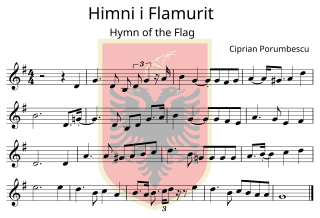
"Himni i Flamurit" is the national anthem of Albania, adopted in 1912. Its music is derived from the Romanian patriotic song "Pe-al nostru steag e scris Unire", composed by Ciprian Porumbescu. The lyrics, which are close to the original Romanian lyrics, were written by Albanian poet Asdreni. The anthem was originally titled "Betimi mbi Flamur".
The Albanian alphabet is a variant of the Latin alphabet used to write the Albanian language. It consists of 36 letters:
The Albanian National Awakening, commonly known as the Albanian Renaissance or Albanian Revival, is a period throughout the 19th and 20th century of a cultural, political and social movement in the Albanian history where the Albanian people gathered strength to establish an independent cultural and political life as well as the country of Albania.

Conrad Malte-Brun, sometimes referred to simply as Malte-Brun, was a Dano-French geographer and journalist. His second son, Victor Adolphe Malte-Brun, was also a geographer. Today he is perhaps best remembered for coining the name for the geographic region Oceania around 1812, he also coined the name Indo-China.
The Vithkuqi alphabet, also called Büthakukye or Beitha Kukju after the appellation applied to it by German Albanologist Johann Georg von Hahn, was an alphabetic script invented for writing the Albanian language between 1825 and 1845 by Albanian scholar Naum Veqilharxhi.
The Elbasan alphabet is a mid 18th-century alphabetic script created for the Albanian language Elbasan Gospel Manuscript, also known as the Anonimi i Elbasanit, which is the only document written in it. The document was created at St. Jovan Vladimir's Church in central Albania, but is preserved today at the National Archives of Albania in Tirana. The alphabet, like the manuscript, is named after the city of Elbasan, where it was invented, and although the manuscript isn't the oldest document written in Albanian, Elbasan is the oldest out of seven known original alphabets created for Albanian. Its 59 pages contain Biblical content written in a script of 40 letters, of which 35 frequently recur and 5 are rare.
Muçi Zade was the author of the earliest known Albanian poem written in Arabic script and belonging to the era of Bejtexhinj. Nothing is known about him beside his poem Imzot, mos më lerë pa kahve, and that he was at an old age at the time he composed it.

Eqrem Çabej was an Albanian historical linguist and scholar who, through the publication of numerous studies gained a reputation as a key expert in research on Albanian language, literature, ethnology and linguistics.
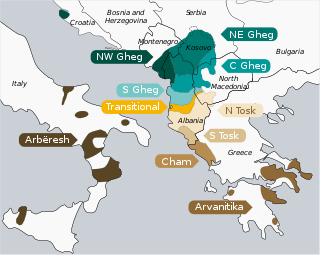
Albanian is an Indo-European language and the only surviving representative of the Albanoid branch, which belongs to the Paleo-Balkan group. Standard Albanian is the official language of Albania, Kosovo and North Macedonia, and a co-official language in Montenegro, as well as a recognized minority language of Italy, Croatia, Romania and Serbia. It is also spoken in Greece and by the Albanian diaspora, which is generally concentrated in the Americas, Europe and Oceania. Albanian is estimated to have as many as 7.5 million native speakers.

Kostandin Nelko, known as Kostandin Kristoforidhi, was an Albanian translator and scholar. He is mostly known for having translated the New Testament into Albanian for the first time in the Gheg Albanian dialect in 1872. He also provided a translation in Tosk Albanian in 1879 thereby improving the 1823 tosk version of Vangjel Meksi. By providing translation in both dialects, he has the merit of founding the basis of the unification of both dialects into a national language.

Naum Veqilharxhi was an Albanian lawyer and scholar. In 1844, he published using a unique alphabet for the Albanian language with characters he had created himself, the Vithkuqi script. Veqilharxhi is one of the most prominent figures of the early Albanian National Awakening, and is considered by Albanians as its first ideologue.
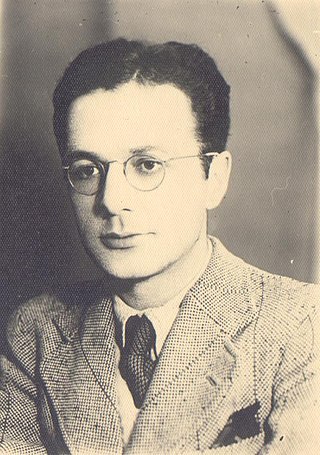
Dhimitër Shuteriqi was an Albanian scholar, literary historian, and writer. He participated in the anti-fascist National Liberation Movement. After the war, he was a member of the People's Assembly and one of the founders and later president of the Albanian League of Writers and Artists. In addition to a series of books and novels, he has published numerous volumes of textbooks, especially those on the History of Albanian Literature for high schools.

The Black Society for Salvation was a secret Albanian nationalist society established in 1909. Its main task was to organize uprisings in southern Albania and Macedonia struggling for the unification of the four Ottoman vilayets with the substantial Albanian population into one autonomous political unit with its own government and parliament. The members of the society considered the armed rebellions as legitimate means for achieving their aims.
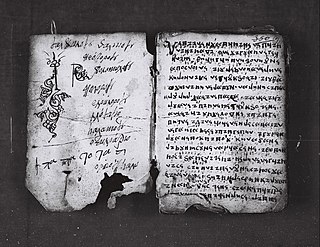
The Elbasan Gospel Manuscript is an 18th-century collection of translations from the New Testament into Albanian. Although the author is mainly known as the Anonymous of Elbasan, according to Mahir Domi and Robert Elsie the linguistic and historical evidences indicate to be the work of Gregory of Durrës. On the cover's verso with the same ink as the text, something has been written in a different script, which has been interpreted by a historian as ‘Theodoros Bogomilos / Papa Totasi’, although this tentative interpretation isn't universally accepted. For this reason the work is sometimes attributed to Totasi as the owner, if not the creator of the manuscript.
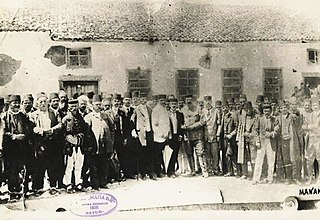
The Congress of Dibër was a congress held by members of Albanian committee in Debar from July 23 to July 29, 1909. The congress was chaired by Vehbi Dibra, Grand Mufti of the Sanjak of Dibra and was sponsored by the government of the Young Turks. It was held on the first anniversary of the Young Turk Revolution and was a countermeasure on the Latin script based Albanian alphabet which came out of the Congress of Manastir.

Skënder Petro Luarasi was an Albanian scholar, writer and anti-fascist activist.

Aqif Pasha Biçaku mostly known as Aqif Pashë Elbasani was an Ottoman Albanian political figure in the Sanjak of Elbasan and after the Young Turk Revolution became an activist for the Albanian national cause.
Constantine of Berat, known among Albanians as Kostandin Jermonak Berati or shortly Kostë Berati, was an Albanian writer and translator of the 18th century.
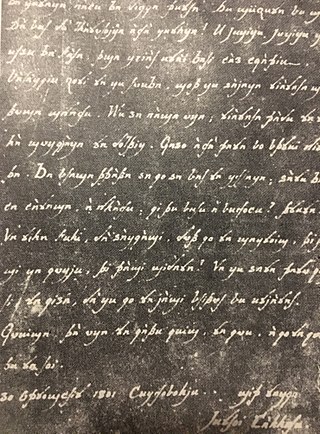
Vellara script or Vellara alphabet is one of the original Albanian alphabets, encountered for the first time in the early 19th century. It is named after the Greek doctor, lyricist and writer Ioannis Vilaras, the author of a manuscript where this alphabet is documented for the first and so far the only time.

Theodhor Haxhifilipi, also known as Dhaskal Todhri, was a teacher from Elbasan, who is credited as an inventor of an original Albanian alphabet. The Todhri script, as is called because of him, according to Kostandin Kristoforidhi, was either invented by Theodor, or brought by him from Voskopojë. Theodhor is the author of numerous translations of liturgical works in Albanian, of which only a few survived. A mass of John Chrysostom, preserved in a later manusrcipt of 32 pages, is amongst the rare ones kept at the National Library of Albania.














